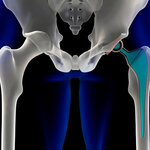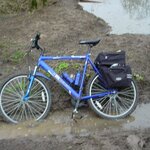Technology

The following is a guest post by David Orban, CEO at Dotsub, faculty and advisor at Singularity University, and trustee of Network Society Research.
When I implanted an NFC chip in my left hand about two months ago at the Singularity University Summit Europe in Amsterdam, I followed the tradition of our species that a hundred thousand years or more ago decided to become a cyborg.
The NFC chip, sold through the aptly named Dangerous Things website, is embedded in a glass vial and is injected under the skin between the thumb and the index finger, safely lodged in plenty of shock absorbing…

A new research effort is focused on nanostructured materials with biocompatible and antibacterial properties. Ana Maria Arizmendi Morquecho, scholar at the Research Center for Advanced Materials (Cimav) in Mexico, says that the challenge is to find appropriate measures to improve the compatibility of a metal structure with the chemical composition of bone tissue and human bone’s nanostructures.
Materials have to be resistant to wear, they need improved mechanical properties and they need to be compatible with the human body while abiding with public health requirements. Knees…

Cycling for Science #2 - Geology
Cycling on tarmac roads in summer is all very well but you can learn a whole lot about geology - and the laws of physics - if you ride off-road. For example: today I went for a ride along a little-known trail and discovered a great deal about the adhesive properties of clay, the non-adhesive properties of tires clogged with wet clay and the super-adhesive and abrasive properties of brake pads clogged with dry clay.
A lot of mud and a bike - bliss!
An aside
In my first article on velocipedological science: Cycling for Science #1 - Tensegrity, I spoke of…

A nationwide project to study the genetic causes of rare developmental disorders has found 12 causative genes that were unidentified before. The Deciphering Developmental Disorders (DDD) nationwide genome-wide diagnostic sequencing program sequenced DNA and compared the clinical characteristics of over a thousand children to find the genes responsible for conditions that include intellectual disabilities and congenital heart defects, among others.
DDD worked with 180 clinicians from 24 regional genetics services across the UK and the Republic of Ireland to analyze all ~20,000 genes in…

By David Glance, University of Western Australia
People of the western world have been making resolutions for the new year for over 4,000 years.
The Babylonians, along with the Romans who later developed the idea further, made resolutions in the hope of favorable returns from the gods.
In the current day, self-interest has become dis-intermediated from others and we now make resolutions that are largely about self-control and self-improvement, with the occasional thought given to being a nicer person to others.
Although there seems to be some evidence that making resolutions for a new year…

No one in business can figure out what an 'SEO expert' is - in most cases it is simply the person who knows the password to the Facebook account. A new study finds that it may be better to have less popular people rather than marketing experts talking about your fundraising efforts, because people with fewer friends on Facebook raise more money for charity than those with lots of connections.
Professor Kimberley Scharf, economist at the University of Warwick, analyzed data from JustGiving.com and found a negative correlation between the size of a group and the amount of money given by…

A European team is working on the world’s first W-band wireless system - millimeter wave technology for high speed wireless mobile and fixed point Internet - as part of a £2.8 million TWEETHER project.
Millimeter waves - found in the spectrum between microwaves and infrared waves - are considered the most promising and cost effective solution for the future. The TWEETHER project will result in a powerful and compact transmission hub, based on a traveling wave tube power amplifier and an advanced chipset in a compact terminal, with performance far outweighing any other technology.…

In the former mining area Herrerias in Andalusia, the deep waters of Pit Lake Guadiana show extremely high concentration of dissolved carbon dioxide (CO2).
Levels are so high that if it were to bubble up, human beings close-by would be jeopardized. To demonstrate a possible fix, scientists of the Spanish Institute of Geology and Mining, the University of the Basque Country (UPV/EHU, Bilbao) and the Helmholtz Centre for Environmental Research (UFZ) constructed a pilot plant for degassing.
A fountain pulls deep water through a pipe to the surface, where the gas can escape from the…

In an era where hackers can easily hack into department store credit card records or Sony Corporation and the US National Security Agency is spying on everyone, it's no surprise people with a choice opt not to have all of the electronic medical records available - even if it puts them at risk.
The first real-world trial of the impact of patient-controlled access to electronic medical records found that 49 percent of the patients who participated withheld clinically sensitive information in their medical records from some or all of their health care providers.
During the six-month trial, 105…

Big data may be taking over the fashion industry's runways, according to an analysis of relevant words and phrases from fashion reviews.
At the Workshop of Information Technology and Systems in Auckland, researchers analyzed 6,629 runway reviews of 816 designers from Style.com, covering 30 fashion 'seasons' from 2000 to 2014, and have able to identify a network of influence among major designers and track how those style trends moved through the industry, said Heng Xu, associate professor of information sciences and technology, Penn State.
"Data analytics, which is the idea that…